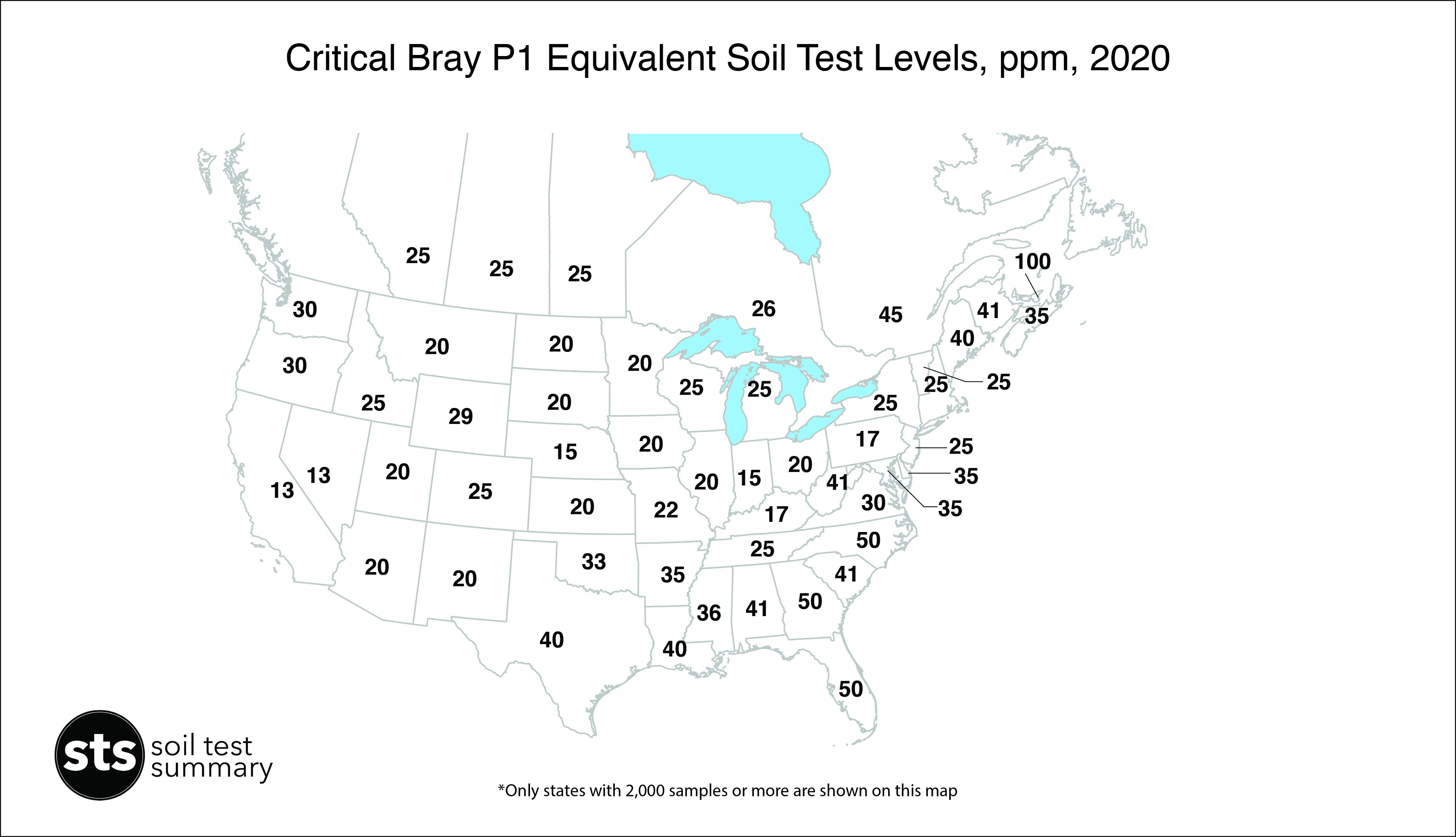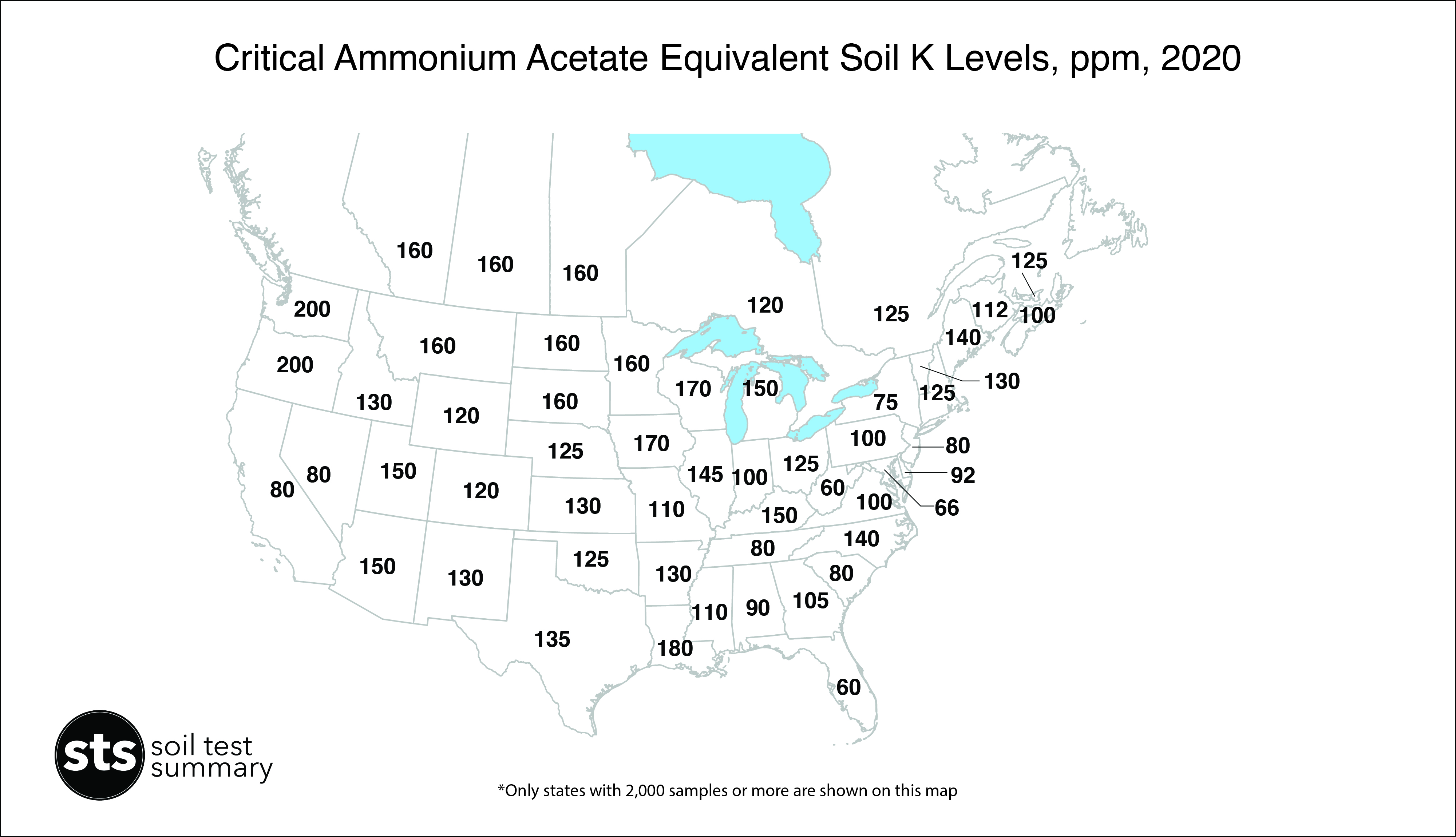A critical level is the soil test level below which nutrient inputs are required to meet soil fertility management objectives. These objectives vary among the states and provinces, with each representing considerations of short and long-term profit, market and environmental risks, accuracy and precision in soil fertility assessments, as well as many other factors. Critical levels therefore vary from state to state as various aspects of management receive different levels of emphasis. Critical Bray P1 equivalent levels for the soils and typical cropping systems of the Great Plains and western Corn Belt are usually assumed to be around 20 ppm and to increase to 25 or 50 ppm for the eastern U.S. Certain crops, such as potatoes on some soils, will require much higher soil P levels with research showing agronomic response in the 100 ppm range. Critical ammonium acetate K equivalent levels for the relatively high cation exchange capacity (CEC) soils of western and central North America are generally in the 120 to 200 ppm range. Critical levels are usually lower in eastern North America, and on low CEC soils may drop to 60 ppm. State and province specific critical levels shown in the figures below are intended to reflect the dominant cropping system for each jurisdiction. They may or may not reflect current recommendations, as they have been kept constant over time for consistency with past reports.

